The following list gives some details on books and special issues related to elemental speciation (analysis) published between 2006 and 2010. The list is neither exhaustive nor do we guarantee that all books are still available.
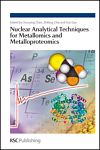 Nuclear Analytical Techniques for Metallomics and Metalloproteomics
Nuclear Analytical Techniques for Metallomics and MetalloproteomicsChun-ying Chen, Zhi-fang Chai, Yu-xi Gao,
Royal Society of Chemistry, 2010, 416 Pages (ISBN 978-1-84755-991-3)
The intent of this book is to provide readers with a comprehensive view of application of advanced nuclear analytical techniques for metallomics and metalloproteomics, both areas emerging as scientific hot topics in bioanalytical and inorganic chemistry and biochemistry. Metallomics and metalloproteomics study is not only for chemists involved in nuclear techniques and speciation, it also be important for environmental, nutritional and clinical researcher and drug developer. This authoritative book sets out to emphasize and describe the superiority of nuclear analytical techniques and the importance of metallomics and metalloproteomics study in the multidisciplinary research field. Analytical chemists and scientists working on bioanalytical and inorganic chemistry and biochemistry of metals; or on metabolic or environmental related speciation studies will find this book an invaluable reference point.
 Introduction to XAFS: A Practical Guide to X-ray Absorption Fine Structure Spectroscopy
Introduction to XAFS: A Practical Guide to X-ray Absorption Fine Structure SpectroscopyGrant Bunker
Cambridge University Press. 2010, 268 pages (ISBN 0-5121-75775-X)
X-ray absorption fine structure spectroscopy (XAFS) is a powerful and versatile technique for studying structures of materials in chemistry, physics, biology and other fields. This textbook is a comprehensive, practical guide to carrying out and interpreting XAFS experiments. Assuming only undergraduate-level physics and mathematics, the textbook is ideally suited for graduate students in physics and chemistry starting XAFS-based research. It contains concise executable example programs in Mathematica 7. Supplementary material available at www.cambridge.org/9780521767750 includes Mathematica code from the book, related Mathematica programs, and worked data analysis examples. The textbook addresses experiment, theory, and data analysis, but is not tied to specific data analysis programs or philosophies. This makes it accessible to a broad audience in the sciences, and a useful guide for researchers entering the subject.
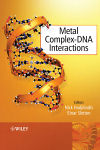 Metal Complexes-DNA Interactions
Metal Complexes-DNA InteractionsNick Hadjiliadis, Einar Sletten
John Wiley & Sons, 2009, 543 pages
Metal ions and metal complexes have long been recognized as critically important components of nucleic acid chemistry, both in regulation of gene expression and as promising therapeutic agents. Understanding how metal complexes interact with DNA has become an active research area at the interface between chemistry, molecular biology and medicine.
Metal Complex - DNA Interactions provides a comprehensive overview of this increasingly diverse field, presenting recent developments and the latest research with particular emphasis on metal-based drugs and metal ion toxicity.
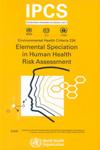 Elemental Speciation in Human Health Risk Assessment,
Elemental Speciation in Human Health Risk Assessment,
P. Apostoli, R. Cornelis, J. Duffus, P. Hoet, D. Lison, D. Templeton,
Environmental Health Criteria #234, WHO, Geneva, 2007, 256 pages (ISBN 92 4 157234 5)
The
purpose of this book is to assess, evaluate, and give guidance on the
role of elemental speciation and speciation analysis in human health
hazard and risk assessment. The book is directed at risk assessors and
regulators, to emphasize the importance of consideration of speciation
in their deliberations. To date, this issue has not been a part of most
hazard and risk assessments. Further aims of the publication are to
encourage the analysis of speciation of elements to increase knowledge
on the effect of speciation on mode of action and to increase
understanding of health effects.
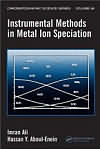 Instrumental Methods in Metal Ion Speciation,
Instrumental Methods in Metal Ion Speciation,
Imran Ali, Hassan Y. Aboul-Enein,
CRC Press, 2006, 376 pages (ISBN: 0-8493-3736-4)
Instrumental
Methods in Metal Ion Speciation provides comprehensive coverage of the
distribution, toxicities, and techniques of metal ion speciation. The
authors discuss techniques such as gas and liquid chromatography,
capillary electrophoresis, and both electrochemical and radiochemical
methods. The text also covers the principles of metal ion speciation,
sample preparation, and metal ion speciation into environmental and
biological samples using various techniques.
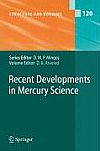 Recent Developments in Mercury Science
Recent Developments in Mercury Science
D.A. Atwood
Springer, 2006, 193 pages (ISBM 3-540-31254-4)
The collection of papers provide a basic understanding of the chemistry of mercury in natural systems using techniques that have recently become available. Topics include mercury speciation in the environment using x-ray absorption spectroscopy, photochemical redox reactions of mercury, probing mercury complex speciation with multinuclear NMR and more.
More books
last time modified: February 20, 2013